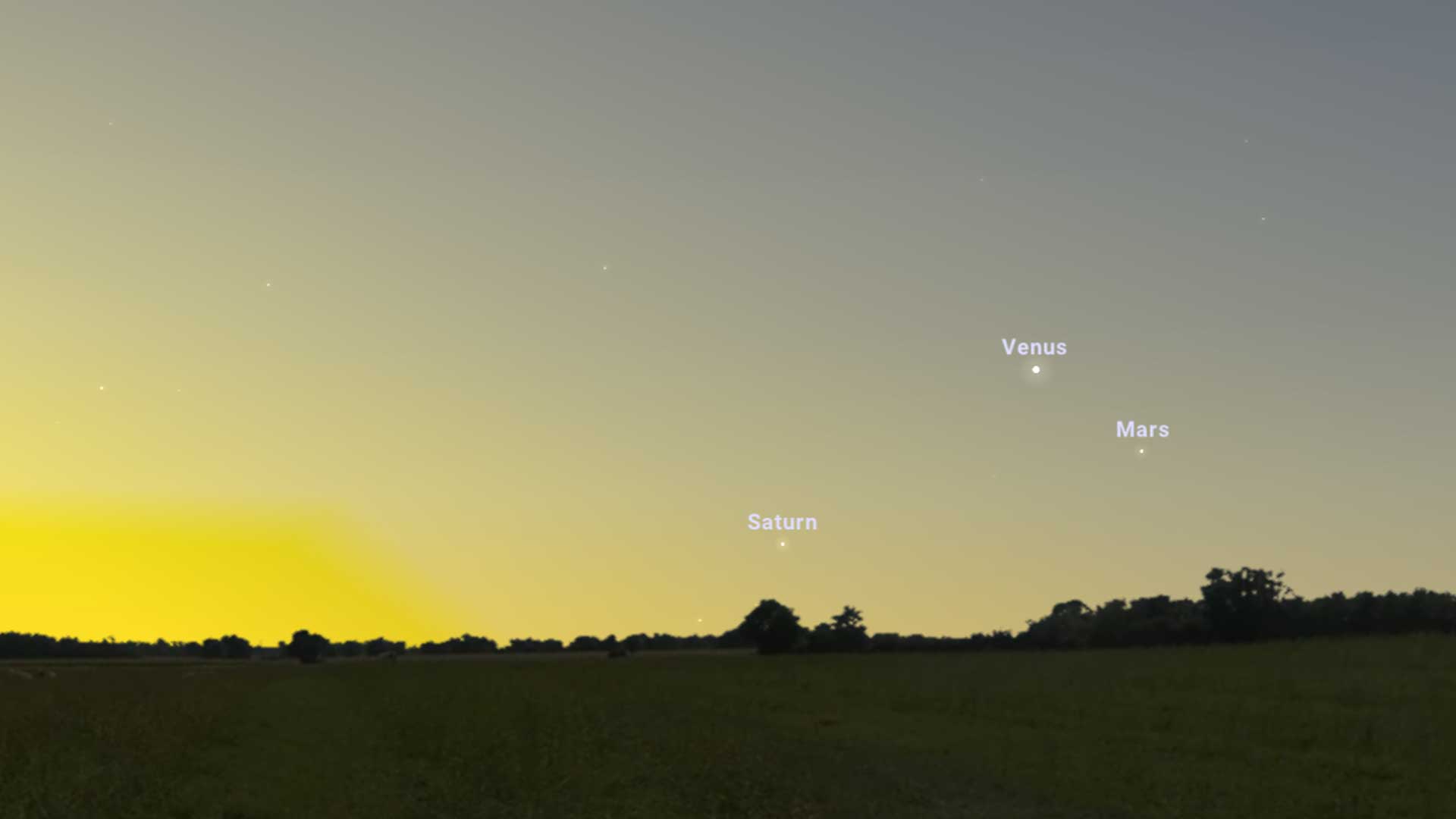Planet Venus at its 'greatest elongation' from the sun. Here's how to see it.
Venus has had a busy March! Now, the bright planet will be at its greatest distance from the sun tonight (March 20).

Venus will be at its greatest distance from the sun tonight (March 20), making it a great time to spot the planet in the evening sky.
With a magnitude of -4.4, Venus should be fairly easy to spot in the eastern sky, despite its low pre-sunrise altitude. While the planet will reach its greatest western elongation at 5:35 p.m. EDT (21:35 GMT), skywatchers will have the best chance at viewing Venus in the very early morning, according to In-The-Sky.org.
Venus should be bright enough to see with the naked eye, depending on weather conditions or cloud coverage in your area. However, you might want to use binoculars to get an even more detailed view of the planet. Just look to the southeast before sunrise.
Related: The brightest planets in March's night sky: How to see them
During its greatest elongation, Venus will be 47 degrees west of the sun. Due to its position, the planet will appear 50% lit.
"In theory, greatest elongation is the time at which the planet's terminator — the line separating the light and dark sides of the planet — appears perfectly straight through telescopes, essentially dividing Venus into two perfect halves; this is known as the dichotomy,” according to Nakedeyeplanets.com.
Skywatchers will get an extra special treat while viewing Venus tonight: Two bonus planets, Saturn and Mars. The trio will appear very close together and continue to get even closer through the end of the month. Venus will then start to move out of view, as Saturn and Mars get ready for a super-close meeting at the beginning of April.
Breaking space news, the latest updates on rocket launches, skywatching events and more!
To view Venus and other night sky events in 2022, check out our guides for the best telescopes and best binoculars. If you're hoping to snap photos of the planets, here's our guides for the best cameras for astrophotography and best lenses for astrophotography.
Editor's Note: If you snap an amazing night sky picture and would like to share it with Space.com readers, send your photos, comments, and your name and location to spacephotos@space.com.
Follow Samantha Mathewson @Sam_Ashley13. Follow us on Twitter @Spacedotcom and on Facebook.

Samantha Mathewson joined Space.com as an intern in the summer of 2016. She received a B.A. in Journalism and Environmental Science at the University of New Haven, in Connecticut. Previously, her work has been published in Nature World News. When not writing or reading about science, Samantha enjoys traveling to new places and taking photos! You can follow her on Twitter @Sam_Ashley13.
